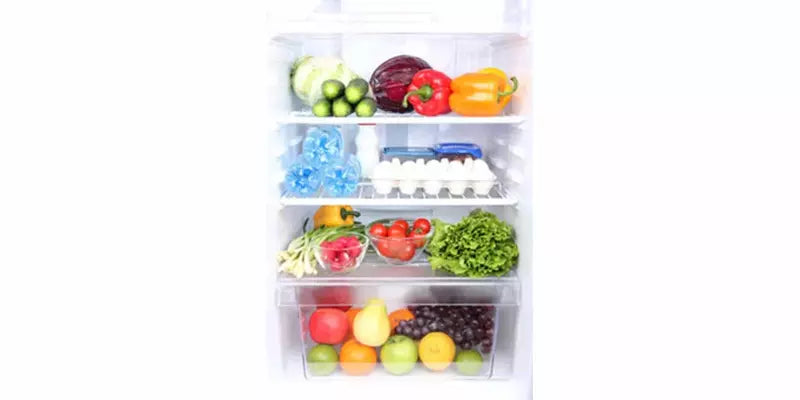While it’s that time of year when most of us go through our closets and store away heavy coats, warm wool sweaters and thicker pants to make room for lighter and more colorful clothing, have you ever considered editing your refrigerator or pantry in preparation for the warmer months ahead? Preparing yourself for the upcoming season of fresh produce and healthier eating will help ease your transition.
Since it’s most likely that you’ll be storing fresh spring greens and vegetables in your refrigerator, let’s focus there! As you look inside, stand back and survey the contents. Is there room for any new types of food in there? If your fridge is already bursting at the seams, where will you find room for fresh seasonal produce? Let’s tackle the refrigerator door first before we move into the main area of your fridge.
- Review your condiments: Go through all the condiments and remove those items with high-fructose corn syrup, partially hydrogenated oils (PHO), and anything with food coloring (color additives) or artificial preservatives. PHOs contain heart-unhealthy trans-fats; and, according to a recent study, artificial coloring agents and artificial preservatives aggravate Attention Deficit Hyperactivity Disorder (ADHD) symptoms. Finally, look at the expiration dates on your remaining condiments and discard the ones that have expired.
- Get rid of the margarine: While you’re at it, pitch the margarine in the trash because it’s a PHO. Unless you are sensitive to dairy, organic butter or ghee (used in moderation) is a healthier option. If you’re sensitive to dairy, Earth Balance Buttery Spread or Miyoko’s European Style Cultured Butter are delicious butter substitutes and are readily available in most grocery stores! You can also try cooking with cold- or first-pressed, extra-virgin olive oil. Buy brands in dark glass or opaque containers, as the light will not oxidize the oil. Do not buy “light” or reduced-fat versions, and store your olive oil in a dark, cool spot in your pantry.
- Glass storage is best for food: Pull our all the prepared foods. If you can’t remember when you made it or bought it, throw it away! Store the prepared foods you’re keeping in clear glass containers. Glass containers have several benefits. They are a time saver, as they allow for a quick visual assessment of what you do or do not have. It’s also healthier to reheat meals in glass rather than plastic because there is no concern about the release of harmful chemicals (like phthalates) into your food. While the initial cost of glass containers can be more expensive, they will outlast and outperform their plastic counterparts. Glass doesn’t bend or melt in the dishwasher or microwave, and unlike plastic, it doesn’t stain. So, in the long run, glass is more cost effective and more environmentally responsible, since you won’t throw it away as often.
- Asses the ingredients of your processed foods: Next remove all drinks and foods that contain those ingredients we decided were objectionable in your condiments.
- The fresher, the better: Look in your crisper drawers and dispose of all the produce in the that has gone limp or is starting to go bad. Fresh produce definitely has it’s benefits nutritionally over frozen or canned versions… but after enough time, the nutrients begin to breakdown.
Stand back and look into your fridge. How much room do you have now? Can you actually visualize a fridge filled with fresh spring greens and vegetables? You’ve done it!! Your refrigerator is ready for spring.
Wouldn’t it feel great if your pantry was that tidy? Perhaps that’s a task for tomorrow, but whenever you’re ready be sure to apply the same principles you used to spring clean your fridge. There are three simple rules: 1) discard old foods; 2) eliminate foods that contain high-fructose corn syrup, PHOs, and artificial colorings and preservatives; 3) store foods in clear glass containers to help you quickly evaluate what you have on hand.
For more help on stocking your kitchen with whole foods, schedule an appointment with our dietician, Liz DeJulius, today and treat yourself to copies of The Whole Life Nutrition Cookbook and Nourishing Meals (both authored by Tom Malterre MS, CN and Ali Segersten). These cookbooks, which are available in the AIM Lifestyle Store, not only educate you on how to prepare your kitchen, but they are also full of delicious gluten-free, dairy-free and/or soy- and egg-free recipes. You can read their blog and explore recipes to sample at: https://nourishingmeals.com/




